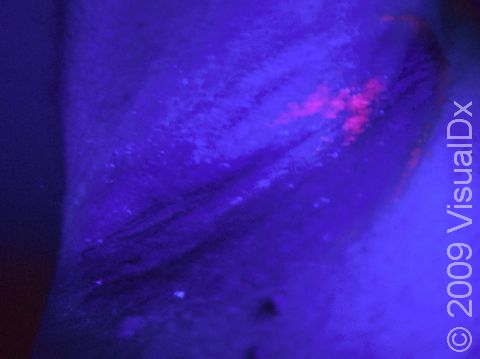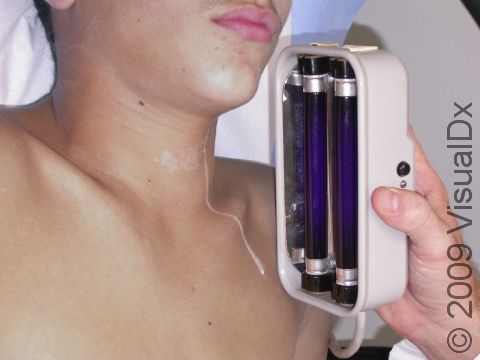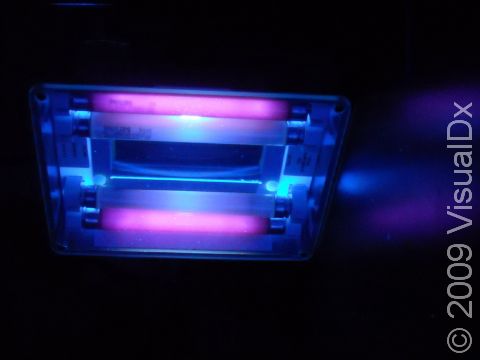Wood's Lamp Examination
A Wood’s lamp is a device that emits ultraviolet (UV) light in the 365 nanometer range and is commonly used by dermatologists to assist in the diagnosis of various pigment and infectious disorders. The examination is performed in a dark room, allowing the Wood’s light to shine directly on the affected area for a few seconds and looking for any changes in color or fluorescence. Normal skin does not fluoresce under the light of a Wood’s lamp. If a fungal or bacterial infection or pigment disorder is present, Wood’s lamp examination can strengthen or lessen the suspicion of a particular diagnosis, based on the color of fluorescence of the affected skin being illuminated. In addition, subtle changes in color may be detected as well.
Who's At Risk?
Some of the many skin disorders that can fluoresce under Wood’s light examination include the following:
- Fungal infections
- Bacterial infections
- Head lice and nits
- Erythrasma
- Porphyria cutanea tarda
- Vitiligo
- Other pigmentary disorders
Signs & Symptoms
If it is known ahead of time that a Wood’s lamp examination will be performed, it is best to not wash the area and not apply any cream to the skin to avoid inaccurate results. Most of the time, however, the decision to perform this test occurs at the time of the visit, in which case no preparation is necessary.
With the exam room lights turned off, the Wood’s lamp is held by the physician approximately 5 inches from the area being examined. The UV light emitted by the lamp is shined directly on the patient’s skin while the doctor looks for any colorful fluorescent changes that may suggest or confirm a particular diagnosis. This portion of the examination usually lasts less than a minute. Patients feel no discomfort from the exam.
Self-Care Guidelines
A physician may decide to treat a skin condition supported by the results of the Wood’s lamp examination or perform additional tests to arrive at the correct diagnosis.
Following Wood’s lamp examination, no aftercare is recommended specific to the examination itself. Depending on the results of the examination, however, the physician may recommend treatment of a skin disorder.
Treatments
- Microbiological culture of the affected skin
- Skin biopsy
- Microscopic examination of skin scrapings
When to Seek Medical Care
Patients should avoid looking directly into the UV light. Given the brief amount of time (usually seconds) needed to shine the light on the affected skin, the risks of a Wood’s lamp examination are minimal to none, and the procedure is well tolerated, as there is no pain associated with the procedure and no side effects as a result.
The presence of other materials that glow (eg, certain makeup and deodorant) or the room not being dark enough may alter the results of the exam. It is important for patients to know that not all infections can be detected by this procedure.
Trusted Links
Last modified on August 16th, 2022 at 2:38 pm

Not sure what to look for?
Try our new Rash and Skin Condition Finder


